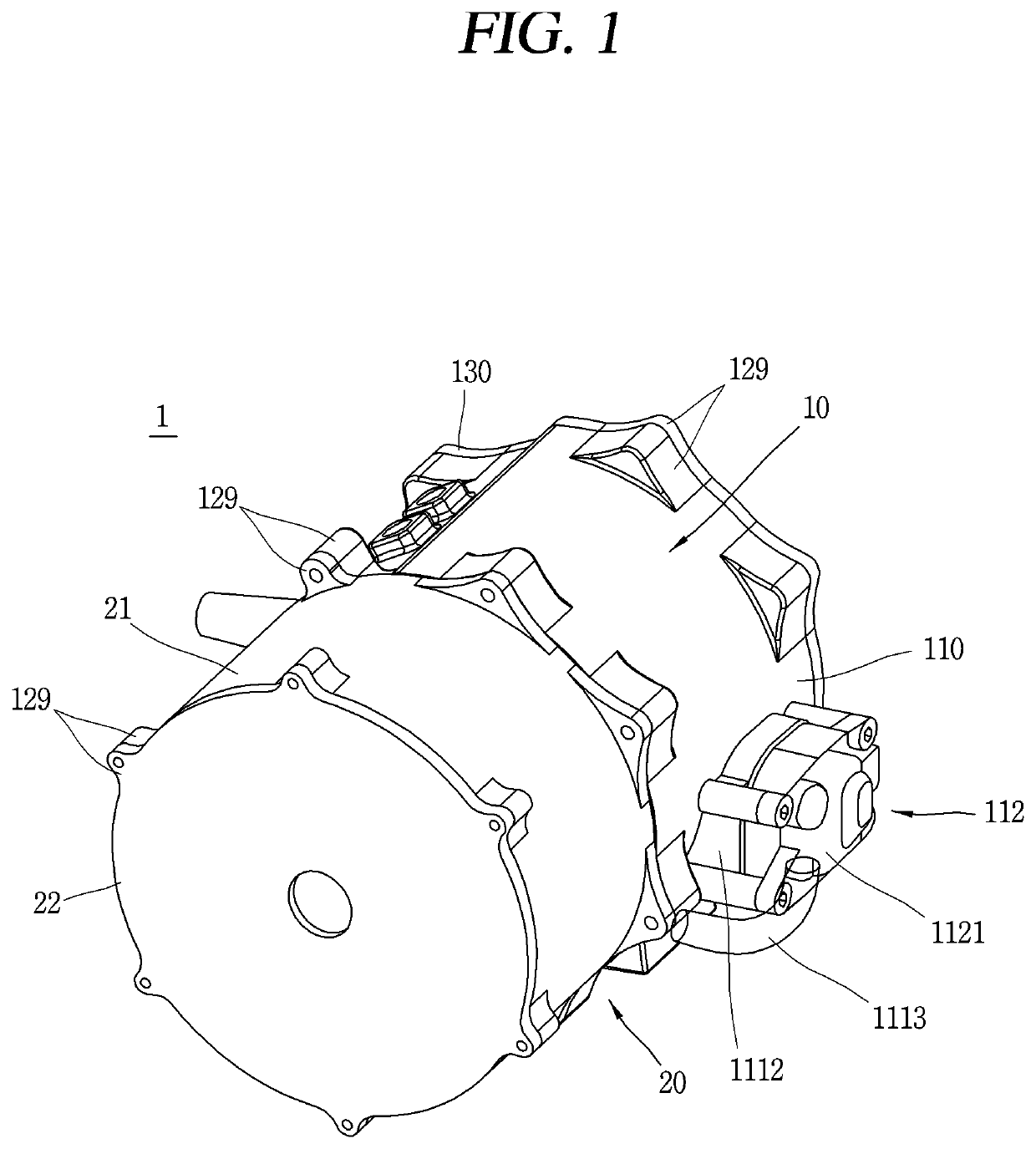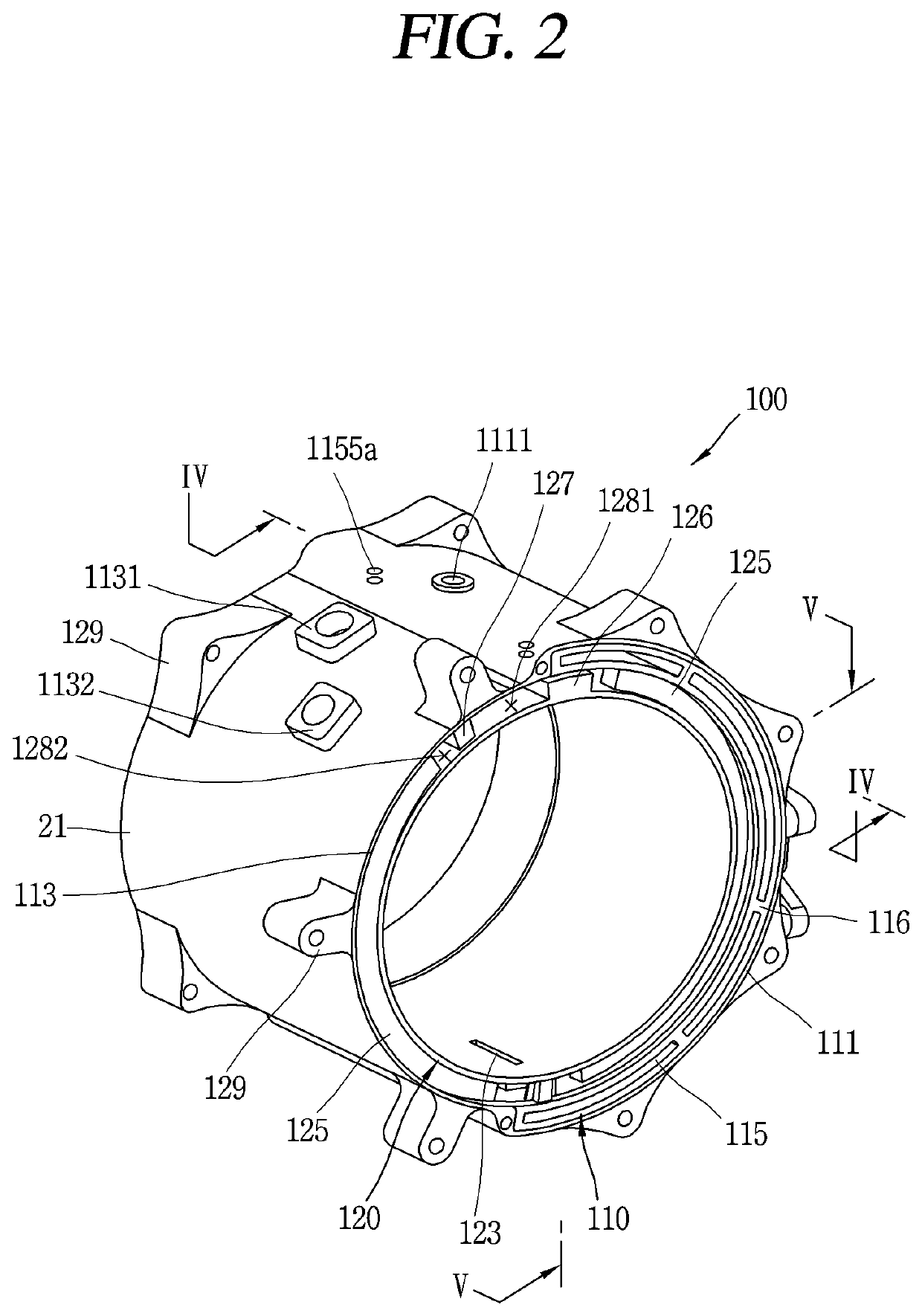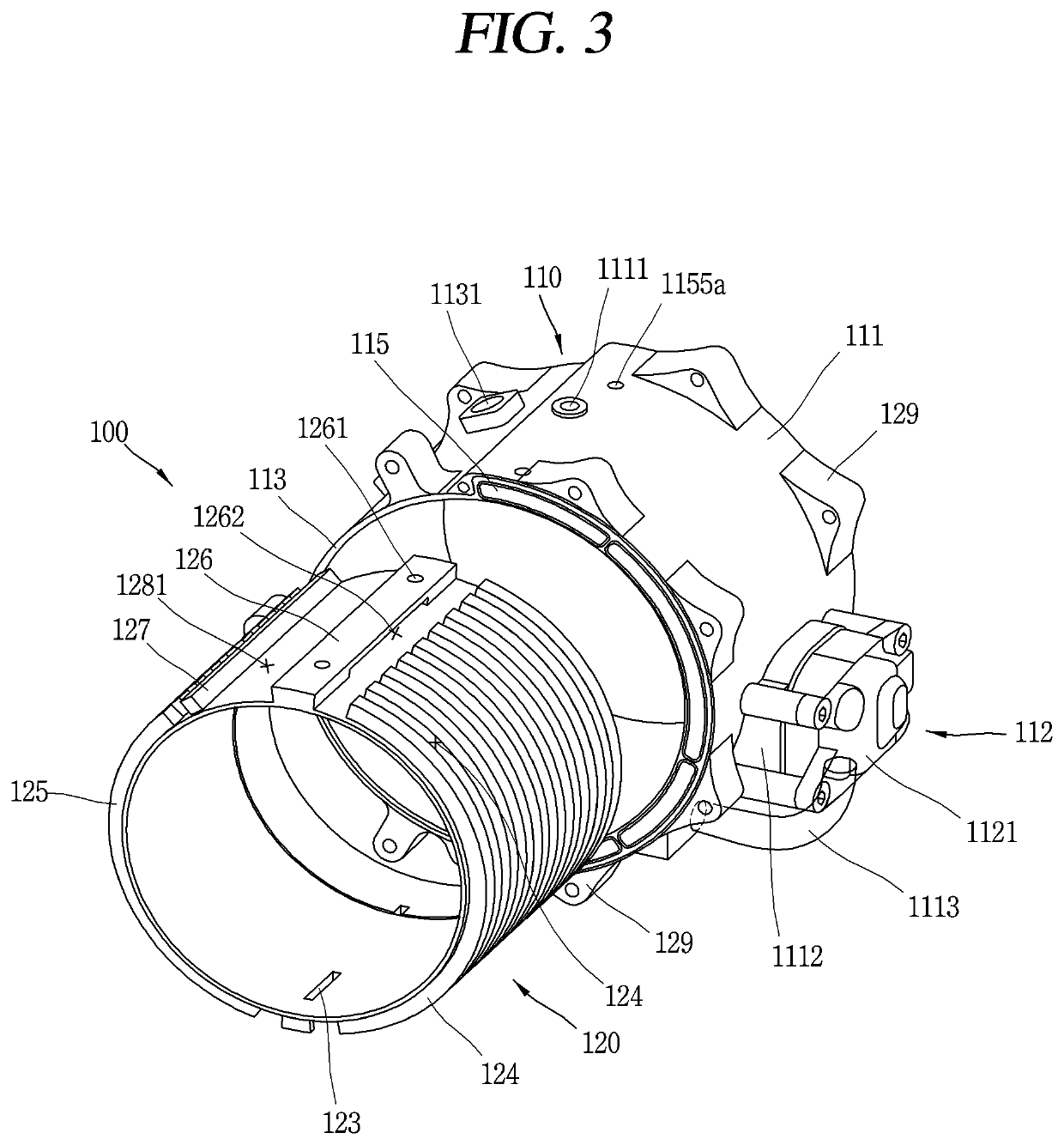Electric motor
a technology of electric motors and motors, applied in the field of electric motors, can solve the problems of cooling performance of electric motors, affecting the cooling efficiency of electric motors, so as to improve the heat dissipation performance of oil, improve the cooling efficiency, and reduce the pressure loss of oil
- Summary
- Abstract
- Description
- Claims
- Application Information
AI Technical Summary
Benefits of technology
Problems solved by technology
Method used
Image
Examples
second embodiment
[0229]FIG. 8 is a cross-sectional view of a motor housing 200 showing a structure of a dual cooling passage according to the present disclosure.
[0230]The motor housing 200 according to a second embodiment may include an outer housing 210 and an inner housing 220. The dual cooling passages may include a plurality of first cooling passages 214 disposed inside the outer housing 210 and a second cooling passage disposed inside the inner housing 220.
[0231]Each of the plurality of first cooling passages 214 may extend in a circumferential direction inside the outer housing 210, and the plurality of first cooling passages 214 may be spaced apart along a length direction of the outer housing 210 by the plurality of passage formation portions 2151.
[0232]The second cooling passage may include a plurality of heat exchange cells 225 extending in a length direction inside the inner housing 220 and a plurality of communication passages connecting the plurality of heat exchange cells 225.
[0233]The...
third embodiment
[0238]FIG. 9 is a cross-sectional view of a motor housing 300 showing a structure of a dual cooling passage according to the present disclosure.
[0239]The motor housing 300 according to a third embodiment may include an outer housing 310 and an inner housing 320.
[0240]The dual cooling passages may include a plurality of first cooling passages 314 disposed inside the outer housing 310 and a second cooling passage 324 disposed inside the inner housing 320.
[0241]Each of the plurality of first cooling passages 314 may extend in a circumferential direction inside the outer housing 310, and the plurality of first cooling passages 314 may be spaced apart along a length direction of the outer housing 310 by the plurality of passage formation portions 3151.
[0242]The plurality of second cooling passages 324 may also be configured in the same manner as the plurality of first cooling passages 314.
[0243]The plurality of first and second cooling passages 324 are disposed to be open toward the insi...
fifth embodiment
[0335]FIG. 18 is a front view showing a dual passage structure of the motor housing 50 according to the present disclosure.
[0336]In the present embodiment, the motor housing 50 may be include triple walls 51, 52, 53.
[0337]The first wall 51 may define an outer circumferential surface of the motor housing 50, and the second wall 52 may be spaced apart from an inner side of the first wall 51 in a radial direction, and the third wall 53 may be spaced apart from an inner side of the second wall 52 in a radial direction.
[0338]A first cooling passage 54 may be disposed between the first and second walls 51, 52, and a second cooling passage 55 is disposed between the second and third walls 52, 53.
PUM
 Login to View More
Login to View More Abstract
Description
Claims
Application Information
 Login to View More
Login to View More - R&D
- Intellectual Property
- Life Sciences
- Materials
- Tech Scout
- Unparalleled Data Quality
- Higher Quality Content
- 60% Fewer Hallucinations
Browse by: Latest US Patents, China's latest patents, Technical Efficacy Thesaurus, Application Domain, Technology Topic, Popular Technical Reports.
© 2025 PatSnap. All rights reserved.Legal|Privacy policy|Modern Slavery Act Transparency Statement|Sitemap|About US| Contact US: help@patsnap.com



